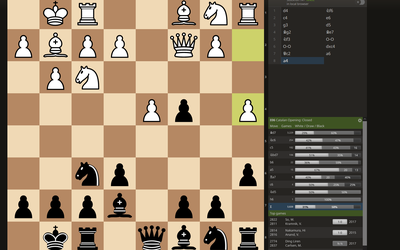
Benjamin Smith
Fundamental rook endgames you must know!
Putting in a few hours is guaranteed to yield big resultsThe struggle is real
We all know that struggle. You're playing a game that seems to go on forever. You're worse, maybe even lost, but through maximum effort you end up in a rook endgame, only down a pawn. Are you lost? You seem to recall that your king is supposed to blockade the pawn, and maybe it's a draw. But theory and practice are two different things. Your opponent refuses your draw offer and keeps pressing. You think you have a fortress, but no. Something cracks. Somehow your king is not where it's supposed to be, and your opponent queens their remaining pawn.
Resigning these games is the bane of every chess players existence. Especially when you turn on the engine after the game and see that in fact you did have a drawn position if only you knew how to keep your opponent's pieces at bay. While I can't guarantee you that a few endgame tips will solve all of your chess problems, I can guarantee you that there is a solution to your endgame woes.
Presenting my newest study requested by lichess: Rook endgames you must know!
Did you know that rook and pawn endgames occur nearly 9% of all chess games? That means being able to convert rook and pawn endgames is a skill more important than learning any opening variation you want to play! If you put in a few hours going over the first 10 chapters of this study until the ideas are ingrained in your head, I can guarantee you that you won't slip up when it comes to your games. My study has a lot more in it than just the most fundamental rook endgames, so if you're an advanced player (>2000 lichess), be sure to check out the second half of the study where we dig deep into more complex rook and pawn endgames. But in this blog I'm only going to focus on the fundamental rook endgames that every chess player must know.
The Philidor position: drawing that which feels lost
Let's talk about the Philidor position.
As we see, we're talking about a rook endgame where one side is trying to queen their only pawn, and the other side is trying to stop it with everything they have. The side defending needs to keep their king directly in front of the pawn, and their rook on the 3rd rank. With this setup, the king is the perfect blockader, and the rook is always there to stop the opponent's king from getting any closer. Just moving the rook back and forth is enough to force your opponent to try one last try: pushing their pawn.
As soon as the pawn is moved, the defending side immediately switches to a new strategy: perpetual check. With the pawn pushed so far forward, the stronger side no longer has any shelter for the king! Now the defender can check the opponent forever from afar, and the game should be drawn.
The only move you need to memorize to secure the draw in your own games is knowing what to do when your opponent pushes their pawn to the 6th rank. I personally have run into this exact drawing technique dozens of times in my own games, and I know you can benefit from knowing this idea too!
Test your newfound knowledge on this interactive quiz!
The Lucena position: Building a bridge to victory
Next we'll talk about the Lucena position.
Here the player up a pawn is going to be able to win! I can't even describe how often I see lower rated players accidentally blunder away a win from this position and end up in the drawn Philidor position instead! The crucial factors in the position are: white's king is in front of his own pawn, black's king is cut-off from the pawn by our rook, and white's rook is far away from the black king.
First you need to check the opponent's king away at least two files from the pawn. Next comes the crucial move to remember: building a bridge with the rook.
Once the bridge has been built. Our king is free to leave the shelter provided by the pawn and we'll be promoting next. Test your newfound technique on this interactive quiz!
In conclusion
Just a little knowledge goes a long way. Drill just these two endgames until you can do it every time, and you're sure to have improved as a player. Who knows, maybe you'll even get one of these positions in your very next game!
If you're an advanced player looking to improve your endgames, you're sure to find some challenging material in the later chapters of the study as well. Take your time going through the rest of the study though, as the knowledge learned in previous chapters will be needed when solving the more complex positions later in the study!
I appreciate all likes on this blog post and/or on the study itself. Feel free to follow me if you are looking for more instructive material. I've already created 6 studies selected for the lichess staff picks page, and I'll be hopefully making more!
If you have any comments about this blog or study, please write in the public chat of the study. I'll be sure to respond there.

